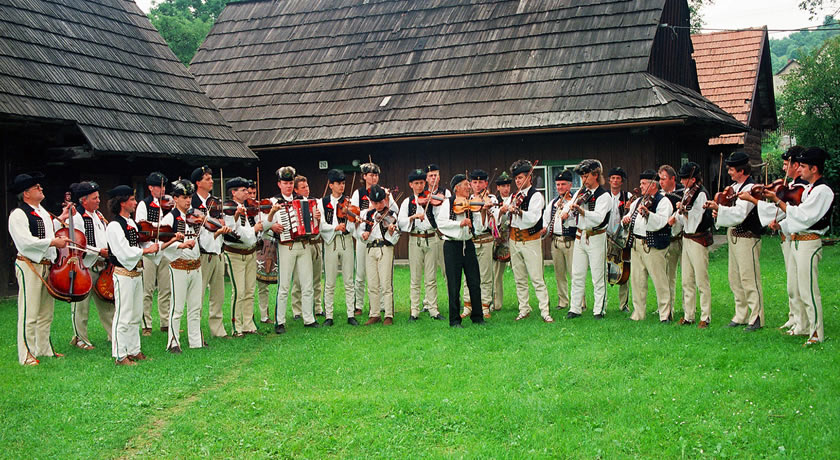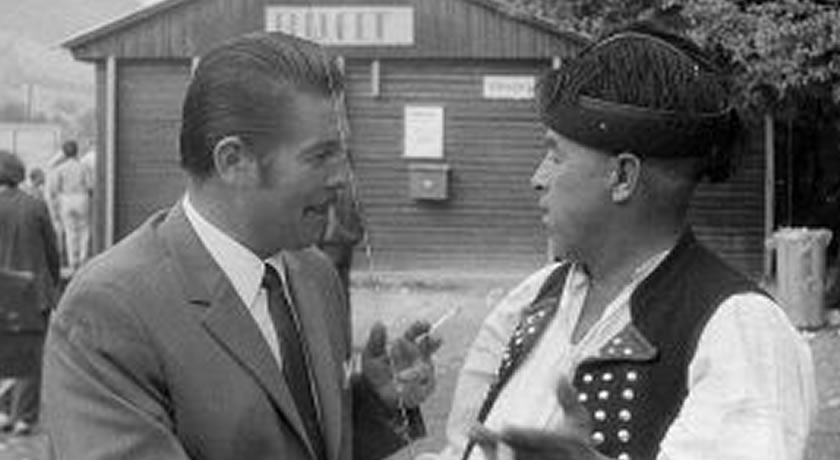
It is still possible to admire the traditional folk costumes at numerous events in Terchová and its surroundings.
Male costume consisted of: a shirt without embroidery with a stand-up collar, white linen pants with two slits, a belt, a vest (“kabatek / lajblík”), a small fur coat (brusliak). In the winter they used to wear a three-quarter thick brown fur coat called huňa and peasant’s shoes, high felt boots (kopitcá) or clodhoppers (baganče). On their head they would wear a small low hat with a visor curved upward or a brown leather cap.
Female costume consisted of: a slip,a shirt (oplecko), a skirt (šorc) sewn to the bodice (lajblík), a working apron or a festive apron, a scarf. On the neck they used to tie a special triangular scarf (skosa). In the winter they used to wear a three-quarter white coat, a short broadcloth smock and a tight jacket. They would wear peasant’s shoes, soft boots or high broadcloth slippers. Girls used to wear their hair in one braid with center parting (pútec). Married women would wrap their hair around the head and support it with a pad (choľma) made of straw and linen. Since the mid-20th century these pads have no longer been worn. On the hair they
The dialect of Terchová belongs to the group of central Slovak dialects and it is very similar to the Orava dialect. It is renowned for being funny and has its own small bilingual dictionary (Terchová dialect - Slovak) containing...
It is still possible to admire the traditional folk costumes at numerous events in Terchová and its surroundings. Male costume consisted of: a shirt without embroidery with a stand-up collar, white linen pants with two slits, a belt, a vest...
It is said that there are the most musicians and singers per square meter in Terchová. This is evidenced by the fact that in each house there is a musician, and each of the settlements used to have its...
The Fatra culture is inextricably linked to shepherds and sheep-farming since the 15th century, when the territory of the region was colonized by the Vlachs who easily integrated into the local population. It is possible for a visitor to...




